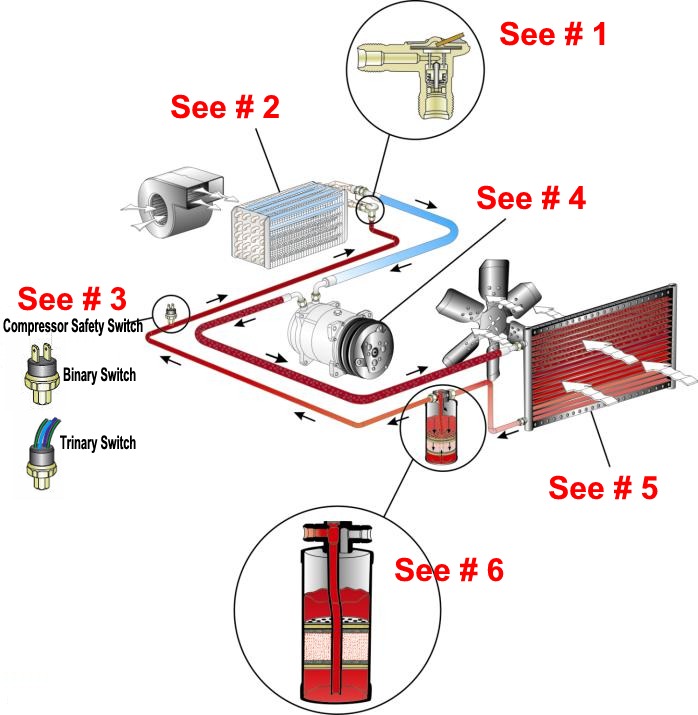|
At Vintage Air, we consider technical assistance a big part of the service that we provide to our customers before, during, and after the sale.
The most important thing to remember when selecting or working on an air conditioning system is that it’s a system. The components must be properly sized, selected, and installed for the system to work efficiently. Once the components have been selected and installed, the system must be evacuated and charged properly and accurately by volume and weight. Today’s refrigerant and climate control systems are extremely charge sensitive, and a correct charge is critical to system performance.
The most common problem our technicians deal with on a daily basis is incorrect charging, with an over charged system being the most common issue. The best way to charge your system is with a quality charging system or charge/recovery machine. This method allows you to dial in the proper amount of refrigerant, and eliminates the guesswork associated with filling the system using individual cans.
We have included a basic diagram of an A/C System, its components and their functions along with instructions for charging your system both with and without a recovery station. We have also included a troubleshooting guide to help you isolate problems with an existing system and a basic electric fan and trinary safety switch-wiring diagram. Air conditioning gauges are almost essential in troubleshooting a system that is not operating properly, so if you do not have access to a set, you will need to enlist the help of a qualified A/C Service Center
|



